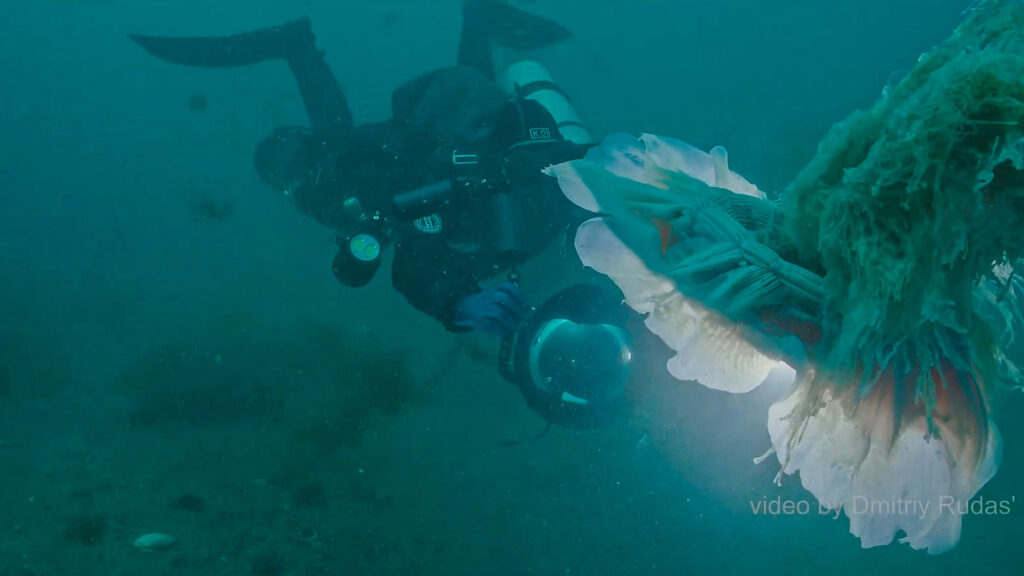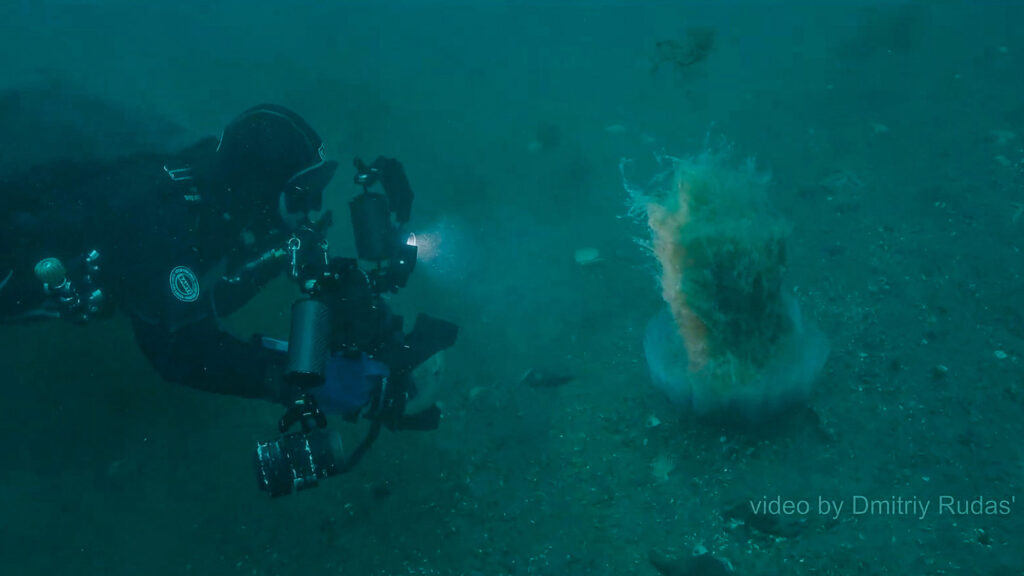One of the largest species of jellyfish in the world, the Lion’s Mane, has been filmed for the first time off the coast of Russia.
A diver captured video footage of the young jellyfish, with a dome of 70 centimetres (27.6 inches) in diameter in the Far Eastern Marine Reserve, which is located in Peter the Great Gulf, on the west side of the Sea of Japan.
The largest recorded Lion’s Mane jellyfish (Cyanea capillata) can reach diameters of 2 metres (6.6 feet), with tentacles that can reach 30 metres (98 feet) in length, but this is the first time the jellyfish has been filmed in the Far Eastern Marine Reserve, according to the Ministry of National Resources of Russia.
Marat Khaidarov of the Primorsky Aquarium, in Russia’s far-eastern Primorsky Krai region, is quoted in a statement from the ministry as saying: “Lion’s Mane jellyfish are common in our waters – it lives in the Ussuri and Amur bays, in the Peter the Great Bay.
“In the Far East, young and relatively small individuals are most often found. Real giants live in the Arctic and Antarctic latitudes, where they can be larger due to abundant feeding on zooplankton and relatively stable low water temperatures.”
The footage, filmed by diver Dmitry Rudas, who was diving with another diver, shows the huge jellyfish moving gently in the water.

(@dmitriy_rudas/Newsflash)
The jellyfish gets its name from the ‘mane’ of long tentacles hanging down from its bell-shaped body. It has up to 1,200 tentacles, divided into eight clusters, that contain a poison to paralyse its prey.
The jellyfish catches small fishes, tiny crustaceans – and even turns cannibal by feasting on other jellyfish.
Attacks by these jellyfish on humans are not fatal, although they produce a powerful sting that is extremely painful to humans.
The Lion’s Mane jellyfish is luminescent and capable of producing its own light, which allows it to glow in the dark.

(@dmitriy_rudas/Newsflash)
Jellyfish can benefit from areas close to human populations, according to scientific research. Pollution, climate change and overfishing are killing off jellyfish predators.
This creates a favourable environment, leading to increased jellyfish swarms.
Vasily Gorobeyko, the head of the Federal State Budgetary Institution (FGBU), is quoted in the statement as saying that the “fauna of the Far Eastern Marine Reserve is distinguished by great biodiversity and is rich in unusual animals.”
He added that the waters of the marine reserve are also home to the world’s largest species of octopus, as well as seals and dolphins, among others.

(@dmitriy_rudas/Newsflash)
To find out more about the author, editor or agency that supplied this story – please click below.
Story By: Fiona Keating, Sub-Editor: Joseph Golder, Agency: Newsflash
The Ananova page is created by and dedicated to professional, independent freelance journalists. It is a place for us to showcase our work. When our news is sold to our media partners, we will include the link here.




